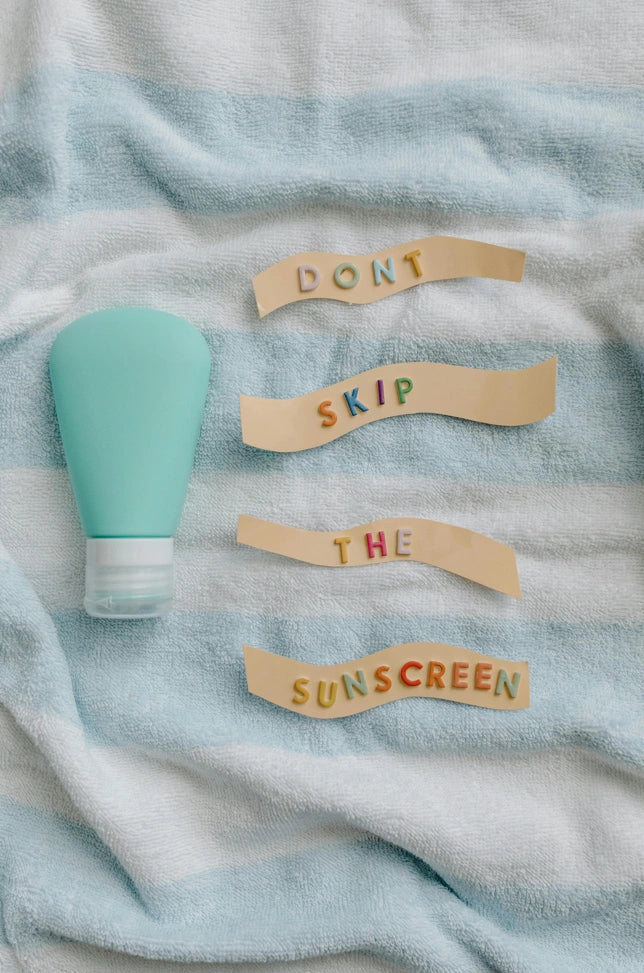
Sunscreen & Spring: How to Protect Your Child’s Skin from UV Rays
5 Min Read
Best sunscreen for kids
Spring is the perfect season for outdoor adventures—parks, playgrounds, and picnics. However, with more sunshine comes a higher risk of sun exposure, making it crucial to protect your child’s delicate skin from harmful UV rays. While many parents remember sunscreen in the summer, springtime sun protection is just as important.
In this blog, we’ll explore why sun protection is essential in spring, how to choose the best sunscreen for your child, and additional tips to keep their skin safe from UV damage.
Why Sun Protection Matters in Spring
Many people associate sunburn and UV damage with summer, but springtime sun exposure can be just as harmful. Here’s why:
- UV Rays Are Still Strong: Even if the weather is mild, UV radiation can be intense. Spring sun exposure is often underestimated because temperatures feel cooler, but UV rays can still cause skin damage.
- Children’s Skin is More Sensitive: A child’s skin is thinner and more delicate than an adult’s, making them more vulnerable to sunburn and long-term skin damage.
- Cumulative Sun Exposure Increases Skin Cancer Risk: Sun damage accumulates over time, increasing the risk of skin cancer in adulthood. Protecting children from an early age can reduce this risk.
- Unpredictable Weather Can Mislead You: Even on cloudy or breezy days, UV rays penetrate through clouds and can cause sunburn.
How to Choose the Right Sunscreen for Your Child
Selecting a safe and effective sunscreen is key to ensuring your child’s skin remains protected during springtime outings. Here’s what to look for:
1. Choose a Broad-Spectrum Sunscreen
A broad-spectrum sunscreen protects against both UVA and UVB rays, which cause premature aging and sunburn, respectively.
2. Opt for SPF 30 or Higher
The Sun Protection Factor (SPF) indicates how well the sunscreen blocks UVB rays. SPF 30 is generally recommended, as it blocks about 97% of UVB rays. If your child has fair skin or is prone to sunburn, consider SPF 50.
3. Pick a Kid-Friendly, Hypoallergenic Formula
Children’s skin is sensitive, so fragrance-free, paraben-free, and hypoallergenic sunscreens are best. Look for zinc oxide or titanium dioxide (mineral-based sunscreens), which are gentler and less likely to cause irritation.
4. Water-Resistant for Active Kids
If your child loves to run, sweat, or play in water, choose a water-resistant sunscreen that lasts at least 40 to 80 minutes before reapplication is needed.
5. Lotion vs. Spray: Which is Better?
- Lotions offer better coverage and are easier to apply evenly.
- Sprays are convenient but should be applied carefully to avoid inhalation. If using a spray, spray it onto your hands first and then apply it to your child’s skin.
Best Practices for Applying Sunscreen
Even the best sunscreen won’t be effective if not applied correctly. Follow these steps:
✅ Apply 15-30 Minutes Before Sun Exposure: Sunscreen needs time to absorb into the skin.
✅ Use Enough Sunscreen: A nickel-sized amount per area is recommended. Don’t forget ears, neck, tops of feet, and hands.
✅ Reapply Every Two Hours: Sunscreen wears off due to sweat, water, and rubbing.
✅ Reapply After Swimming or Sweating: Even water-resistant sunscreens need reapplication after swimming or excessive sweating.
Additional Sun Protection Tips
While sunscreen is a great defense, it shouldn’t be the only one. Here are other ways to protect your child’s skin from UV rays:
1. Dress Them in Sun-Protective Clothing
Opt for lightweight, long-sleeved shirts, pants, and wide-brimmed hats. Look for clothes with UPF (Ultraviolet Protection Factor) 50+ for added safety.
2. Seek Shade During Peak Hours
The sun’s rays are strongest between 10 AM and 4 PM. If possible, plan outdoor activities in the early morning or late afternoon. If outside during peak hours, take breaks in the shade.
3. Use Sunglasses with UV Protection
Children’s eyes are also sensitive to UV rays. Choose sunglasses labeled 100% UV protection to protect their eyes from long-term damage.
4. Be Cautious Around Reflective Surfaces
Water, sand, and even grass can reflect UV rays, increasing exposure. Be extra careful at the beach, pool, or park.
5. Lead by Example
Kids are more likely to embrace sun protection if they see their parents practicing it. Apply sunscreen together and wear sun-protective clothing yourself.
Gentle Reminder
Spring is a wonderful time for outdoor fun, but it’s crucial to protect your child’s skin from harmful UV rays. By using broad-spectrum sunscreen, dressing them in sun-protective clothing, seeking shade, and staying consistent with reapplication, you can keep their skin healthy and safe.
Start good sun protection habits now, and you’ll set them up for a lifetime of healthy skin!



